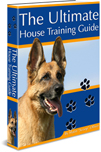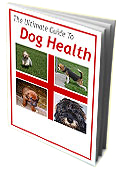 Children and dogs are the subject of many a sweet snapshot, but also some of the gruesome stories. Many of these stories need never have been told. A dog won’t bite a child spontaneously, but it will bite to defend itself if it feels threatened. In most cases the dog ends up taking the blame, but often this is actually the fault of the adults, the dog’s keepers and the parents of the child. They must tech their child how to behave with a dog, and it’s also their job to bring up their dog consistently and to protect it against children that are still too young to understand the nature of a dog.
Children and dogs are the subject of many a sweet snapshot, but also some of the gruesome stories. Many of these stories need never have been told. A dog won’t bite a child spontaneously, but it will bite to defend itself if it feels threatened. In most cases the dog ends up taking the blame, but often this is actually the fault of the adults, the dog’s keepers and the parents of the child. They must tech their child how to behave with a dog, and it’s also their job to bring up their dog consistently and to protect it against children that are still too young to understand the nature of a dog. If you’re thinking of taking in a dog while you also have a baby (or are expecting one), think about what you are about to do! Just like a baby, a puppy needs lots of attention in the first few months. Think about housetraining, socialization and upbringing. After looking after a baby, will you still have the energy left to give a puppy all the attention it needs? Think about the drawbacks too, both of a baby and of a puppy. Imagine you have a baby that cries a lot, costing you precious sleep. How will you react when the puppy then does its business on the carpet, just when you were pleased to be able to sit down for a few minutes? A puppy may also be sickly at the beginning and will need extra attention. Do you still have the time and energy to be able to care for it?
Whether it’s a good idea to get a dog at this time strongly depends on the situation. Someone who is experienced with dogs will view it differently to someone who is getting a dog for the first time. And there are also advantages in getting a puppy while there’s a baby in the house. By the time the baby is a toddler and starts to crawl, the dog is practically grown up. Dog and child grow up together and are completely used to each other. Relating to the dog can also be a valuable contribution to a child’s development.
Even when dog and child grow up together, there can still be potentially dangerous situations. A toddler may crawl up behind the dog. The toddler looks on with wide eyes as the dog keeps walking away, but the dog hates it. It goes to its basket in the corner of the room, and starts to warn the child by growling. The baby now finds the dog’s noises even more interesting and tries to touch it, at which moment the dog bites.
Within the family, the dog is at the bottom of the hierarchy. A young child is certainly not in a position to put a dog in its place. Only in the presence of the parents will a dog recognize the higher position in the hierarchy that the children around it occupy. Apart from that, small children are unpredictable and they still don’t always understand the consequences of their actions. A toddler wants to investigate its surroundings. If it pulls a dog’s ears or sticks its fingers in its eyes, the dog will make a noise. The toddler doesn’t understand that it’s hurting the dog; it’s much more interested in pulling harder. Even the trustiest dog will eventually turn on the young explorer if this goes on too long. Try to avoid this kind of situation by never leaving young children alone with a dog!
It only takes common sense in dealing with these situations. You need not be an expert. Just as a puppy must be trained when it joins the family, the children also need to learn a thing or too. You must never assume that they know how to handle a dog responsibly just like that. Watch out on my next post for more dog tips on handling dogs and children.
















2 comments:
anyone who loves dogs gets my vote been watching ceasar millan the dog whisperer and love the program all the best from the uk
@ stugod... thanks for the tip.. appreciate it..
Post a Comment
I'll be glad to hear from you.